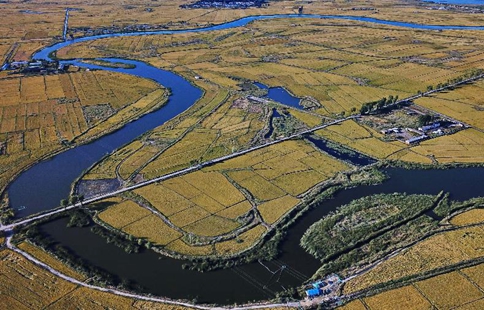SAN FRANCISCO, Sept. 17 (Xinhua) -- A new project led by SLAC, or Stanford Linear Accelerator Center, will combine artificial intelligence (AI) with massive amounts of data and industry experience to identify places where the electric grid is vulnerable to disruption.
The project is the first to employ AI to help the grid manage power fluctuations, resist damage and bounce back faster from storms, solar eclipses, cyberattacks and other disruptions.
Its eventual goal, according to a news release from Stanford University, is an autonomous grid that absorbs routine power fluctuations from clean energy sources like solar and wind and quickly responds to disruptive events with minimal intervention from humans.
Called GRIP, for Grid Resilience and Intelligence Project, the project builds on other efforts to collect massive amounts of data and use it to fine-tune grid operations, including SLAC's VADER project. It was awarded up to 6 million U.S. dollars over three years from the U.S. Department of Energy (DOE).
SLAC National Accelerator Laboratory is a DOE national laboratory operated by Stanford University.
The project will use both machine learning, where computers ingest large amounts of data and teach themselves how a system behaves, and AI, which uses the knowledge the machines have acquired to solve problems.
"One of the first places we will test our data analytics platform is at a major California utility," Sila Kiliccote, director of SLAC's Grid Integration, Systems and Mobility lab, or GISMo, and principal investigator for the project, was quoted as saying. "The idea is to populate the platform with information about what your particular part of the grid looks like, in terms of things like solar and wind power sources, batteries where energy is stored, and how it's laid out to distribute power to homes and businesses."
The knowledge and tools developed will be passed along to another partner in the project, the National Rural Electric Cooperative Association (NRECA), which represents 834 distribution cooperatives that provide electricity to an estimated 42 million people in 47 states. The association will help deploy the tools the team develops on standard utility industry platforms.
It is one of seven Grid Modernization Laboratory Consortium projects that will receive up to 32 million dollars in funding as part of the DOE's Grid Modernization Initiative.

















